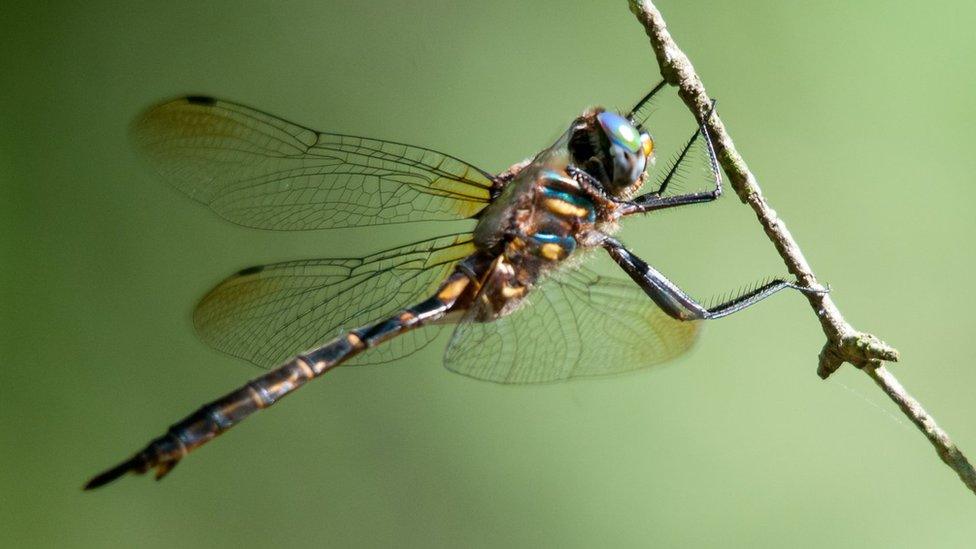More than 960 dragonfly species at risk of extinction, says report
- Published
- comments

Hine's emerald is a species endangered due to the destruction of its habitats
Over 40,000 animal and plant species are at risk of extinction, according to an ongoing report.
The research is being carried out by the International Union for Conservation of Nature, who have published the special list of threatened species called the IUCN Red List.
The report revealed that 960 species of dragonflies and damselflies alone are at risk due to the destruction of their habitats, the use of pesticides and pollution.
Evidence found in the Red List shows the negative impact of human activity and climate change on the natural world.
The IUCN has put more than a quarter (28%) of 142,577 animal and plant species on the Red List, meaning they are under severe threat of extinction.
Conservationists are concerned about the decline in dragonfly and damselfly species, as their numbers can tell us a lot about the habitats they rely on.
While dragonfly numbers have been increasing in the UK, they have been declining elsewhere.
Dragonflies and damselflies typically live in wetland areas - places like marshes, swamps and rivers.
A reduction in numbers often means that their habitats are damaged or shrinking - often because of human activity.
Damage to one species can impact another
This is bad because these types of places are not just homes to endangered animals, they are also places that tend to absorb large amounts of carbon, removing it from the atmosphere.
As a result of their findings, the assessors at the IUCN are encouraging us to do more to protect wetlands.
Dr Viola Clausnitzer, co-chair of the IUCN Species Survival Commission dragonfly specialist group, said: "To conserve these beautiful insects, it is critical that governments, agriculture and industry consider the protection of wetland ecosystems in development projects, for example by protecting key habitats and dedicating space to urban wetlands."
- Published25 October 2022
- Published19 May 2020
- Published23 June 2020
